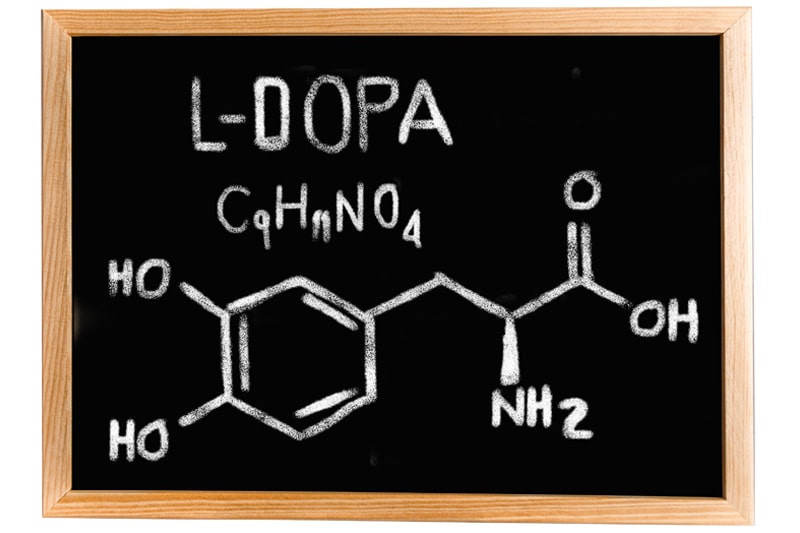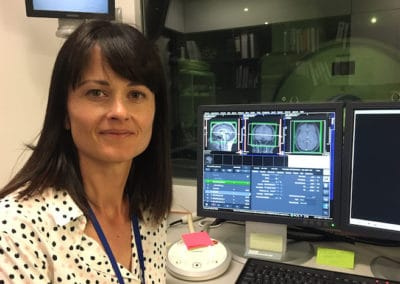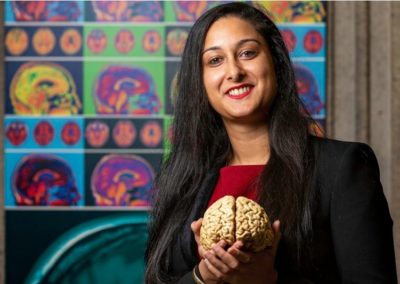This article was originally post by the BHRC [http://www.otago.ac.nz/bhrc/news/otago628517.html]
Parkinson’s disease is an increasingly prevalent problem. The disease, which current affects millions of individuals worldwide, causes a progressive loss of motor (movement) function eventually resulting in almost total immobility. While there are treatments to offset the paralysis of Parkinson’s disease they have well known, and disruptive, side-effects.
L-DOPA is a first-line drug prescribed to individuals diagnosed with Parkinson’s disease. While L-DOPA is effective at reversing tremors and motor problems it can also cause unintentional movements called dyskinesias. These movements can be small, like a twitch or a spasm, or large, like writhing movements of the arms, legs or torso. These movements are uncontrollable and can cause serious disruption to people’s lives. While not everyone experiences dyskinesia when they first start L-DOPA, almost all people who have spent five or more years taking L-DOPA will develop this side-effect. Eventually people with dyskinesia have to choose between taking the drug and not being able to control their bodies, or not taking the drug and finding it increasingly difficult to initiate movement.
It’s not entirely clear why people develop this side-effect. However, a team of researchers have just discovered changes in activity of some of the genes that may be responsible. The team, which included Dr Lisa Smith, Dr Louise-Parr Brownlie, and Associate Professor John Reynolds, believe the genes are related to the areas where cells communicate with one another, the synapses.
In Parkinson’s disease cells in an area of the brain called the substantia nigra start to die. These cells are responsible for creating dopamine, a chemical which triggers the motor system in your brain. As more cells in the substantia nigra die off, less dopamine is released, and so the motor system cannot work as well. This causes a gradual decline in the ability to move freely, to initiate movements, to perform the tiny muscle movements which help you to balance, and also causes a tremor in resting muscles.
At the moment we can’t save the cells of the substantia nigra, but we can replace the dopamine that they should be releasing. L-DOPA isn’t dopamine, but once it reaches the brain it is turned into dopamine. This sudden boost kicks the motor system back online, it lets those people move freely again. However, after months or years of treatment, that freedom comes with its own costs.
Dopamine activates cells in your motor system, but it also allows them to become more closely connected to one another. This means that over time these cells will have more impact over one another, causing each other to be activated more and more easily. This is normally a great system for learning new movements; actions which start out slow and clumsy become second nature over time. This lets us improve our motor control as we move.
The problem arises in the finer detail. Normally the cells in our brains can strengthen and weaken connections as necessary. For the motor system this means that we can keep our movements separate, so one movement shouldn’t also set off another movement. However, this weakening doesn’t seem to happen in Parkinson’s disease. Movements become more and more closely related, causing one action to unintentionally trigger another action. This is believed to be the cause of dyskinesia.
The researchers found more than 250 genes which could be influencing the development of dyskinesia. The genes appear to relate to the creation of new connections between cells. They believe that these genes could be targeted by future therapies to reduce or completely alleviate dyskinesia for people taking L-DOPA.
L-DOPA has been used to treat Parkinson’s disease for more than fifty years. Over time researchers and clinicians have worked to fine-tune its use in order to give people control over their bodies for as long as possible. That fine-tuning continues with this work and, hopefully, these findings will make their way to the clinic in the near future.
The research discussed above was funded by a University of Otago grant, Neurological Foundation of New Zealand, and a bequest from Parkinson’s NZ. We thank each of these organisations for their continued support of New Zealand research.



